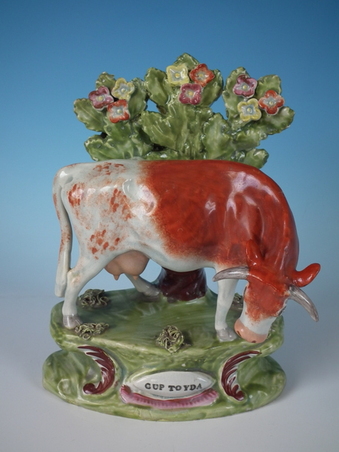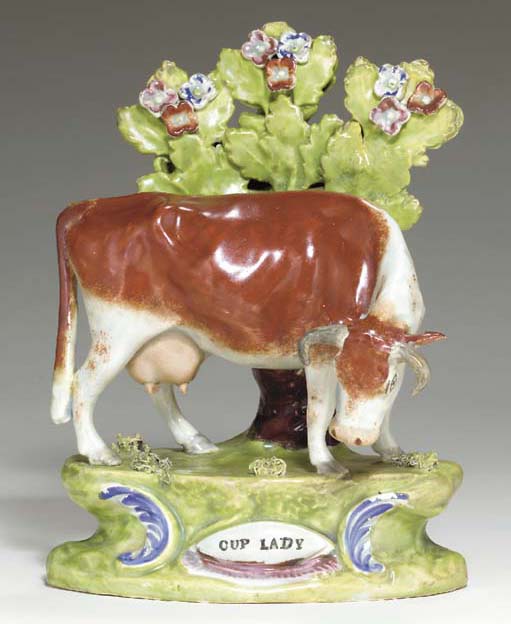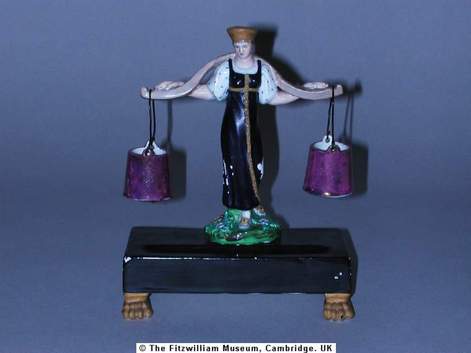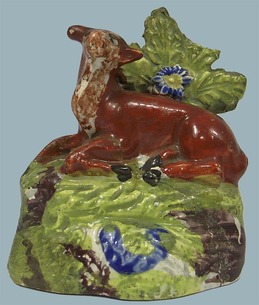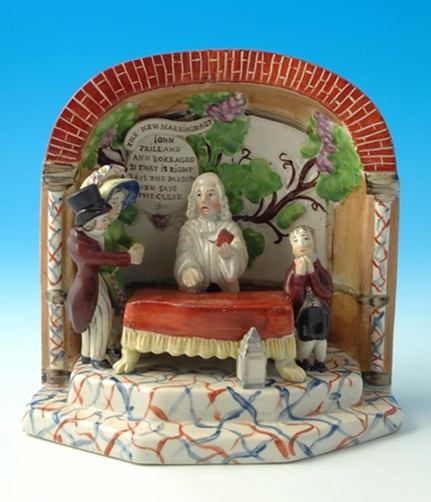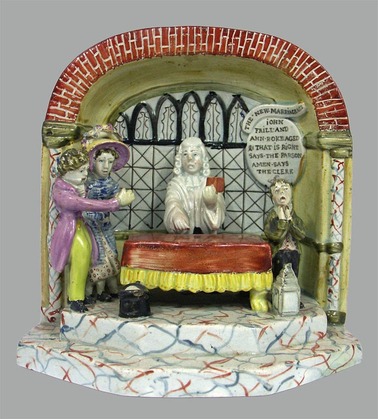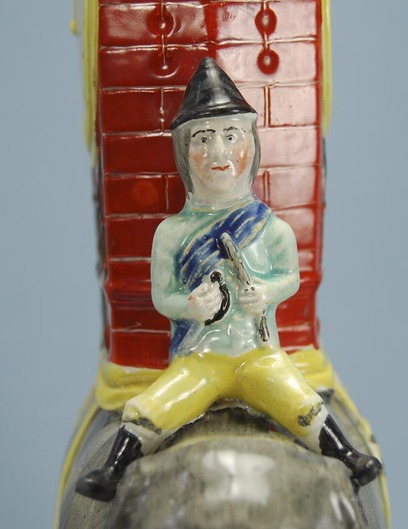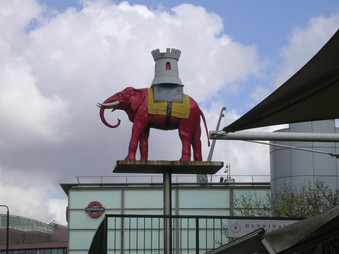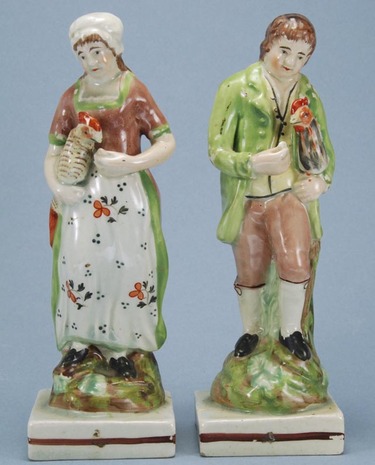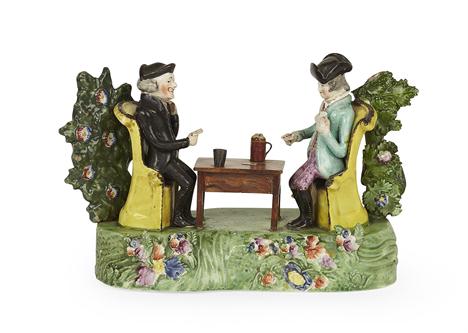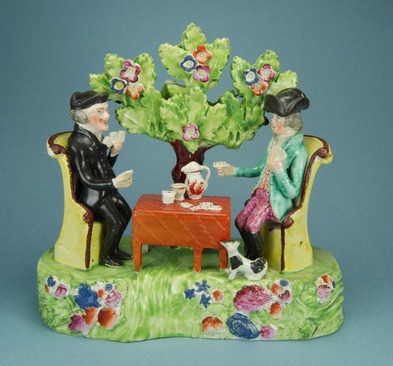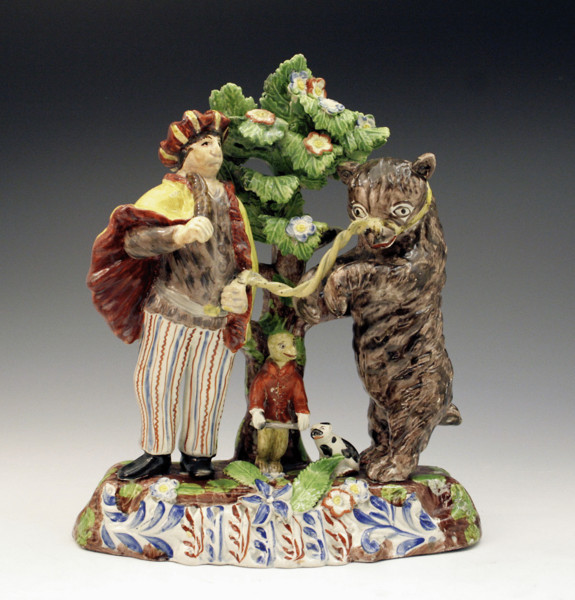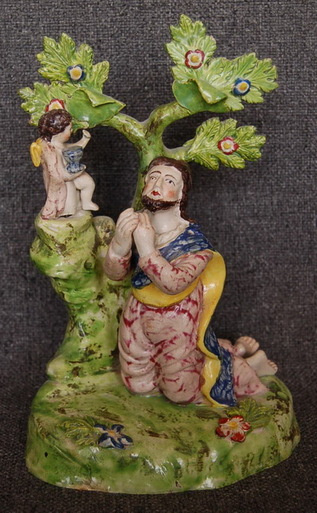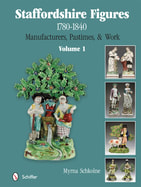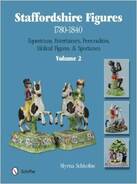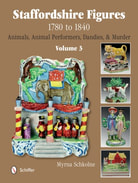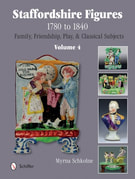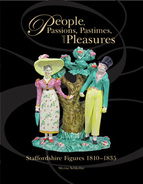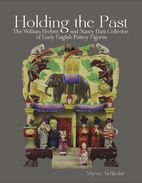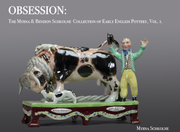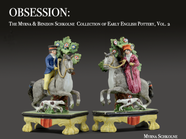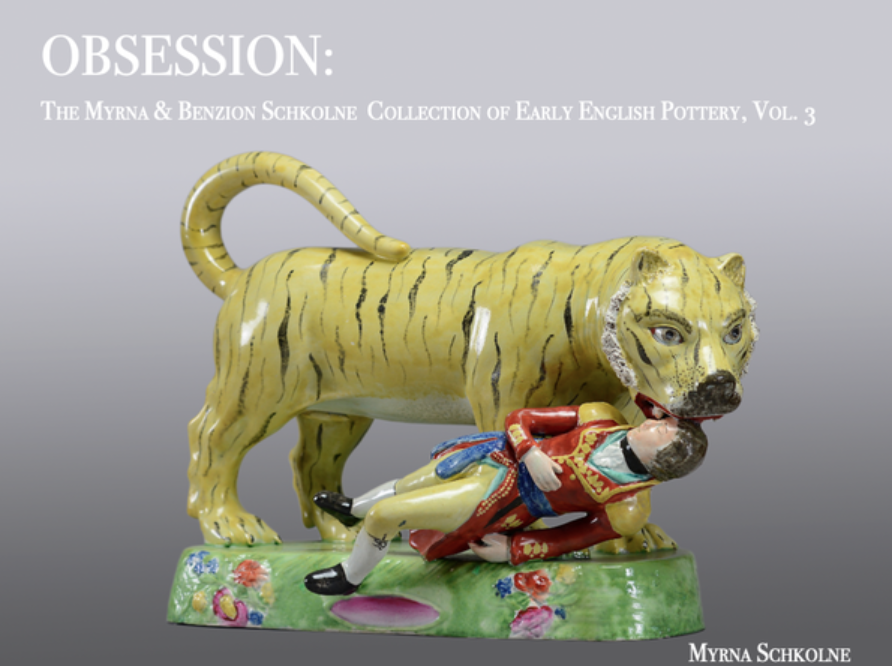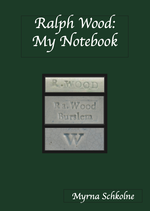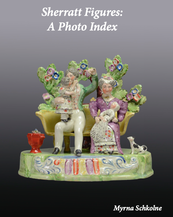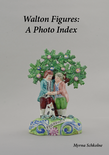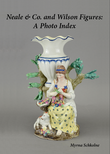Below you have the same cow, but this time she is titled CUP LADY. I remember how my children would tell me that the "ice cream man" was on our road in bygone days. I suspect it was much the same when the milk vendor arrived with her cow, ready to sell milk straight from the cow by the cup. The Cup Lady had arrived--and hence the title on this beautiful bovine.
Far more to my taste is this sweet cow, formerly in the stock of Andrew Dando.
Below, you see another figure attributable to Dale. It too has a bocage that fits into a socket.
The bocage flowers on both the Dale figures you see here are formed identically. Each flower has twelve petals, alternating between long and short. These flowers occur on Dale figures. They also occur on marked Titttensor bocage figures. Only three Tittensor enamel figures with bocages are recorded....and all three have these very same flowers. Nothing is ever cut-and-dried when it comes to attributions. If only these flowers were exclusive to either Dale or Tittensor, how simple life would be. Fortunately, Dale figures usually exhibit other features that aid in attribution. Here is the little Tittensor deer in the Potteries Museum.
